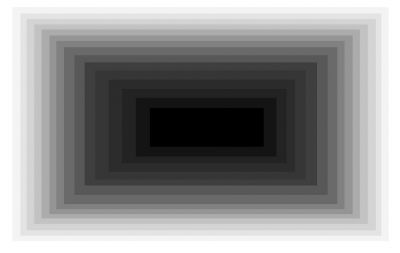Researchers unveil 'super black' material

The evolution of the white to the black
By PBJP (Own work) [GFDL (http://www.gnu.org/copyleft/fdl.html) or CC-BY-SA-3.0 (http://creativecommons.org/licenses/by-sa/3.0/)], via Wikimedia Commons
Scientists have developed a material so dark that when you look at it, it's like staring into a black hole. The material, made of carbon nanotubes, is another step in the scientific quest which began in the 1990s to create the blackest of blacks.
However don't expect Vantablack, as it's known, to appear on a catwalk near you. This material is destined for use in the military and astronautical sectors. Perhaps that's actually not such a bad thing for fashion lovers - a Vantablack dress might not be so flattering according to The Guardian: 'If you were to wear a Little Vantablack Dress, people would see your hands poking out the ends of the sleeves, your legs below the hem, your neck and head - and the rest of you would appear two-dimensional.'
So what's the use of 'the new black'? Well, as The Guardian notes, it absorbs all but 0.035% of light (in technical terms, it has a Total Hemispherical Reflectance or THR of 0.035%) which is a new record. And what makes the latest black particularly special is the fact that it can grow at temperatures as low as 400C. This means it can be grown on lighter materials, such as aluminium, increasing its practical applications.
Extremetech.com predicts that the material will be used to make a variety of stealth craft and weaponry. The website adds, 'It will also be used on the inside of telescopes and other imaging devices, where absorbing stray radiation can significantly reduce the amount of noise - and thus increase the effective range and resolution'.
io9.com elaborates on the composition of Vantablack: 'It's made of carbon nanohair that is 1 000 times thinner than the average human hair. The tubes are small enough to prevent light from entering them and packed so tightly that the light which makes it between the tubes bounces between them until it's absorbed'.
Ben Jensen, the Chief Technical Officer of the Vantablack developers, Surrey NanoSystems, has dubbed the material 'super black'. He tells the Guardian, 'We grow the tubes like a field of carbon grass. The tubes are spaced apart. When a light particle hits the material, it gets between the tubes and bounces around, is absorbed and converted to heat. Light goes in, but it can't get back out'.
Even when you bend or crumple the material, it looks completely flat. Speaking to the Independent, Jensen, attempted to describe the effect: 'You expect to see the hills [of the bends and crumples] and all you can see ... it's like black, like a hole, like there's nothing there. It just looks so strange'.
Vantablack is the result of applying Surrey NanoSystems' patented low-temperature carbon nanotube growth process to the UK Technology Strategy Board's 'Space for Growth' programme, working alongside the National Physical Laboratory and Enersys' ABSL Space Products division.
published: 2015-01-03

